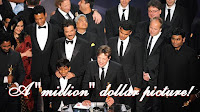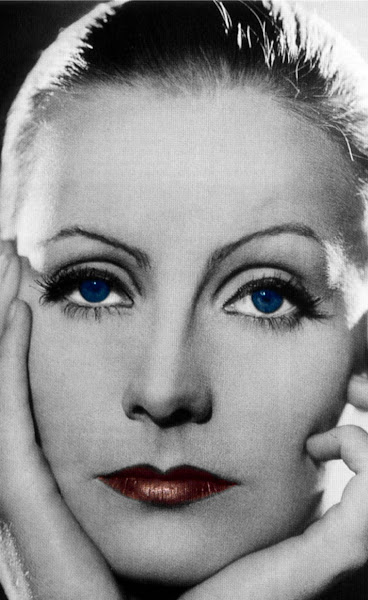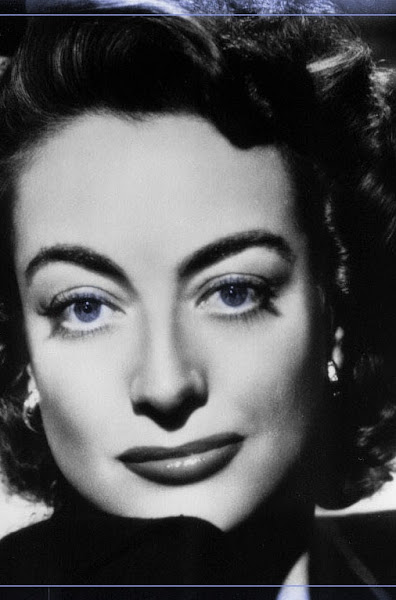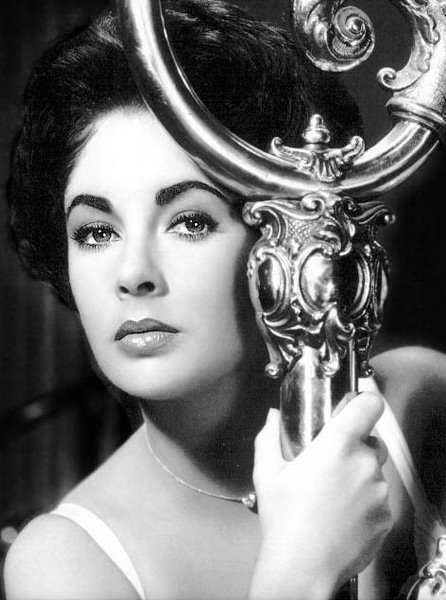 *** out of ****
*** out of ****
Eat your heart out, Mel Gibson—Carl Theodor Dreyer’s meditative “The Passion of Joan of Arc (La Passion de Jeanne d’Arc),” a film now over eighty years old, reigns among all “passion films” because of its powerful visual concentration on the emotional final hours of martyred Joan of Arc. Dreyer’s age-old tale of the young French heroine omits her days of glory and instead humanizes her final hours, which have become the stuff of legend, falling on increasingly indifferent ears as time passes. His potent film attempts to bring the tale to life through stunning close-ups and sharp angles, replete with the angry faces of religious officials and especially the tormented face of Joan herself. However, because the story itself, as can be expected, is already known from the first second, the events and especially the inexhaustible close-ups of Joan sobbing before the camera become a bit tiresome.
Nevertheless, often cited as a marvel of significant visual innovativeness for its use of close-ups, “The Passion” uses the camera extraordinarily effectively. The abundance of close-up shots is astounding visual artistry, certainly revolutionary for its time. Close-ups had never, before or possibly since, been utilized in such an innovative and clever way to communicate human emotion.
The emotional rawness of Renée Maria Falconetti certainly stands out in “The Passion.” Before Demi Moore was rolling perfect tears down her cheek in “Ghost,” Falconetti showed the world how it was done (the Award for Most Tears on Film goes to…). While silent cinema stars were often directed to act a bit exaggeratedly for the camera, the genuineness of Falconetti’s performance runs contrary to this notion and predates the idea of the “method actor.” Emotionally stripped before the camera’s proliferation of imprisoning close-ups, she is largely silent as the religious officials who constantly surround her condemn her as a heretic. Her tears, wide eyes, and upturned gaze are the only confirmations that viewers require to comprehend her state. Even then, she turns Joan into one of the most tragic characters on film through the anguish her unglorified face, with the help of cinematography and no makeup, ardently conveys.
While I have long found it difficult to connect to “passion films,” the film’s visual artistry is undeniable. The plot itself can sometimes become a little tedious, especially when it feels like the film drags its feet a bit in its transition from trial to torture to execution (with a runtime of only eighty minutes!). I personally grew weary of the millions of close-ups of Falconetti with water gushing out of her eyes and anxiously awaited the execution. Although I realize all of those shots are critical to communicating her anguish in the last hours of her life, a good deal of the film might as well be one close-up shot on Joan as she cries and cries and cries and cries some more. (Did Dreyer never hear that less is more?)
Nevertheless, in terms of the visuals, “The Passion of Joan of Arc” is a masterpiece. However, the story itself seems treated rather banally, so something feels lacking there, making it difficult to compare to the outstanding visuals. If for no other reason, the visuals (including Falconetti’s evocative performance) of “The Passion of Joan of Arc” maintain its place in film history and become the reason that viewers should continue to see it. Try to forget that you know the story—you have never seen visuals like these.
“The Passion of Joan of Arc” showed on February 18th as part of the “International Lens” series.
Originally published in the February 25 issue of Versus Magazine: Entertainment & Culture
February 25, 2009
The Passion of Joan of Arc (La Passion de Jeanne d’Arc)
February 23, 2009
In the News/Random Musing: The Academy Awards '09

Wow. The film awards event of the season will never fail to impress me, I am certain. While I missed it last year to see my partner sing in his church's performance of Bach's "St. John Passion" (audience cue: "Aww!"), the 81st Annual Academy Awards ceremony lived up to the sensationalism of its predecessors. My favorite part of the night was the star-studded revelations of the winners in the acting categories. Not only did the winner from the previous year come out to announce the new winner, four other past winners came to help. The abundance of star power was certainly a rush for Oscar junkies like me who excitedly named everyone as he or she appeared on stage and the film for which he or she won the award. I thought I was going to die happily in my chair as Sophia Loren, that beautiful Italian goddess who won the Oscar in 1960 for "Two Women," strode to the left of the stage to help announce Best Actress. I furthermore thought I would die seeing both Eva Marie Saint (still as adorable as ever at age 84) and Joel Grey (who played my all-time favorite character from a musical, Emcee in "Cabaret"). This Oscar night had style, and it had stars.
Meanwhile, while I was unsurprised to watch "Slumdog Millionaire" go home with 8 awards (out of 9 nominations), it was a surprising night in other regards. For example, "The Dark Knight" lost in a few categories, such as cinematography and sound mixing, that I had expected it to take, and I did not expect Penélope Cruz to get her Oscar. However, let us see where the cards fell, shall we?Best Picture: Slumdog Millionaire
Do I see a trend? "Slumdog" captured three of the "big five," along with some other notable technical awards. The fact that it won at least five more awards than any other film should say something to you. (However, I still think "Best Picture" should have been "Revolutionary Road"! To see why, click here.)
Best Director: Danny Boyle, Slumdog Millionaire
Original Song: "Jai Ho," music by A.R. Rahman, lyrics by Gulzar, Slumdog Millionaire
Original Score: A.R. Rahman, Slumdog Millionaire
Sound Mixing: Ian Tapp, Richard Pryke and Resul Pookutty; Slumdog Millionaire
Film Editing: Chirs Dickens, Slumdog Millionaire
Cinematography: Anthony Dod Mantle, Slumdog Millionaire
Writing, Adapted Screenplay: Simon Beaufoy, Slumdog MillionaireBest Actor: Sean Penn, Milk
This was certainly a touching night for the LGBT community. (For why these wins were so important, see this.) Meanwhile, congratulations to Penn for his second win this decade!
Writing, Original Screenplay: Dustin Lance Black, Milk Best Actress: Kate Winslet, The Reader
All of these were expected from the get-go. I am so proud of Kate Winslet, now deservedly recognized for her talent. Meanwhile, the thank you by the family of the late Ledger was quite touching and appropriate. Congratulations to all.
Best Supporting Actor: Health Ledger, The Dark Knight
Animated Feature Film: Andrew Stanton, Wall-EBest Supporting Actress: Penelope Cruz, Vicky Christina Barcelona
I did not initially expect this victory, but it is logical - they say Woody writes good characters. As if Dianne Wiest ("Hannah & Her Sisters," "Bullets Over Broadway"), Michael Caine ("Hannah & Her Sisters"), Diane Keaton ("Annie Hall"), and Mira Sorvino ("Mighty Aphrodite"), among others, could not indicate this. Foreign Language Film: Departures, (Japan) directed by: Yojiro Takita
I am just glad it was not "Waltz with Bashir"! (To see why, click here.)Documentary Feature: James Marsh and Simon Chinn, Man on Wire
"Encounters at the End of the World" was robbed! (To see why, click here.) I mean, it was made by Werner Herzog, for chrissake!
Hearty congratulations to all winners (and to all nominees!) - your achievements have been appropriately recognized. I cannot wait until next year!
February 18, 2009
Wendy & Lucy
 *** ½ out of ****
*** ½ out of ****
“Wendy and Lucy” is perhaps the most interesting experiment on film of late—it presents the moving story of a young woman’s misfortunes through the camera (whereas most other films tend to rely on dialogue). The film’s visual minimalism can be seen through the meticulous direction of Kelly Reichardt, who uses deliberate shots that narrate everything viewers need to know about a scene without insulting their intelligence. Furthermore, some of the shots are created with the same skill as the “greats”—for example, the opening tracking shot of Wendy walking and playing fetch with Lucy is choreographed so well that I instantly compared its effect to the work of Welles. In this way, “Wendy and Lucy” is a strong film in terms of its visuals and, furthermore, because of the quiet sociological study it makes through the tragic, haunting story it has to tell.
Wendy Carroll (Michelle Williams) lives a nomadic existence on her way from Indiana to Alaska, where she hopes to restart her life with a potentially satisfying, lucrative job. The film centers only on the time she spends in the Oregon portion of the trip, where everything hits the fan. Having been carefully rationing out her limited supply of money in order to make the trip run successfully, Wendy sleeps in her car nightly, freshens herself in a gas station bathroom, and spends as little money as possible to eat. However, after spending the night in the wrong Walgreens parking lot, the security guard compulsively dedicated to his lot wakes her early the next morning and forces her to leave the premises, but her car is dead. Furthermore, the mechanic is out for the day and Lucy, her ever-faithful dog, is hungry. Because she is nearly broke, Wendy carefully shoplifts the food she needs from the grocery store but is caught on her way out and subsequently spends the afternoon in jail. When she is released, she returns to the store to find that Lucy is missing, so she spends the next several days searching for her companion. With the obstacles continuing to stack up against her, Wendy must recover her belongings so that she can go on—so that she can survive.
I do not think I could have imagined this film without Michelle Williams. Having proven herself with her role in “Brokeback Mountain,” she continues to establish her talents in “Wendy and Lucy.” The curious thing is that the film reveals barely anything about her character’s life or past, but this is not important. Through the way Williams quietly, but powerfully becomes Wendy, viewers share in and actually comprehend her miserable existence.
Curiously, although some critics might stress the plot device of her Alaskan goal, I think it is, by all means, a “MacGuffin.” Wendy is going somewhere, but the goal actually does not matter—the whole film is an allegory for escape to somewhere, anywhere. Wendy’s trip is motivated by a need to escape, and as the obstacles mount against her in Oregon, Wendy becomes more and more suffocated by entrapment. After all, she cannot go anywhere without her car or best friend.
Besides this allegory of escape, the film also stresses humanism, quietly opining on loving others that need our help. This, in turn, challenges moral definitions of right and wrong. Is it right or wrong that Andy the grocery store clerk has to be a hero, “making an example” of Wendy because she did the “wrong thing” in order to survive? Is it right or wrong that the security guard impulsively offers what he can to Wendy because he sees a poor soul? The answers are up to the viewers.
Deliberately paced, “Wendy and Lucy” might come off boring to some, but the eighty-minute runtime should keep audiences satisfied. In any case, the visual power and narrative resonance of the film should be enough to keep “Wendy and Lucy” worthwhile.
“Wendy and Lucy” is currently playing at the Belcourt Theatre.
Originally published in the February 18 issue of Versus Magazine: Entertainment & Culture
February 11, 2009
Yentl
 ** out of ****
** out of ****
The fact that “Yentl” is a labor of love by Barbra Streisand is no question—after all, she directed, co-produced, co-wrote, and starred in it. However, her vehicle amounts to a heap of sentimentality when the story itself occasionally becomes forgotten in the midst of sappy introspective songs.
“Yentl” is the story of a young Jewish girl from Eastern Europe who is educated in secret by her father but must disguise herself as a boy in order to continue her studies when he dies. Now named Anshel, she is accepted into a yeshiva (a Jewish law school, for you non-Hebrew speakers) and befriends fellow student Avigdor (Mandy Patinkin) and his betrothed, Hadass (Amy Irving). However, she begins to see the consequences of her actions as her “passing” leads to multiple instances of almost being “outed” by Avigdor and finally leads to her subsequent betrothal to Hadass. Yentl (or Anshel) must then figure out how to work her way out of the hole in which she continues to dig herself before it becomes too late and the consequences lead to disastrous results.
Since she displays her Jewish heritage prominently and proudly in every film in which she stars (verify for yourself), it was only a matter of time before Streisand would star in a role such as Yentl. However, although she can play a frumpy woman (“The Mirror Has Two Faces”), she does not play a convincing man. In fact, the suspension of disbelief regarding her gender role-reversal is never in place for me because I could not fathom how Avigdor did not have the sense to realize that “Anshel” is just not “one of the guys.” On the other hand, Barbra’s work behind the camera is certainly admirable, especially for her debut. She understands the way films work visually and uses this to her advantage, creating interesting shots with effective uses of blocking, lighting, etc. However, the film’s most interesting and memorable shot is amusingly “borrowed.” It is the final shot that circles over Yentl as she happily sails to America, which recalls the aerial shot of Streisand on the ferry boat by the Empire State Building, belting out the final note of “Don’t Rain on My Parade” in “Funny Girl.” However, for "Yentl," this shot seems out-of-place and too sensational.
Meanwhile, in general, the film’s acting performances are satisfactory. Not great and not bad—just satisfactory. Streisand, although, again, wholly unconvincing as a man, brings Yentl/Anshel to life through her genuine connection to the character and her struggle. The other two leading actors’ performances are those about which I feel the most ambivalent, which would be a logical conclusion given the Oscar and Razzie nominations for Irving for her role.
I think this film would have worked best as a drama and not as a musical. It seems that the serious subject matter of "Yentl" is treated too lightly with the music. Because Barbra breaks out in song almost on cue, the story gets old quickly and loses its thrust. When it gets old, it just becomes painful. Because the film runs over two hours, viewers wait tediously as Yentl goes from conflict to conflict until she finally reveals her true identity to Avigdor, perhaps the most exciting part of the story when it finally happens. However, this is certainly a film best recommended for Barbra’s fans because it will take infatuation with her to get through even the most agonizingly boring parts. But be warned: it takes a fan to be able to swallow an unabashed Barbra vehicle.
Yentl was released on DVD for the first time in Region 1 on February 3rd. To secure your own copy of the film, click here.
February 4, 2009
Waltz with Bashir (ואלס עם באשיר)
 ** ½ out of ****
** ½ out of ****
Animation has long been a realm claimed for children, but “Waltz with Bashir” proves that animation is not just for kids. With a stylized look similar to “A Scanner Darkly,” the Israeli film uses animation for phantasmagorical purposes—to help viewers experience the wild power of memories of the 1982 Lebanon War as they can be remembered (or misremembered). The film’s colors tend toward minimalist hues, but the nauseating yellow color of war is unmistakable. “Waltz with Bashir” may well be the first time an animated film rivals the powerful anti-war sentiments of the greats, such as “Paths of Glory” or “Platoon.” However, while long-lasting images such as the firing squad or Sgt. Grodin being mowed down by friendly fire, respectively, undeniably evoke an emotional response, the images of “Waltz with Bashir” leave me rather empty. Because it is animation and not “real” like the other examples, it simply might lack the emotional resonance capable with narrative film.
However, “Waltz with Bashir” is a complexly psychological film that centers on memories. The film begins with a pack of voracious dogs tearing down a sidewalk amidst terrified civilians. They stop at the edge of a building, eyes wild and teeth bared, while a man stands in a window far away at the top. Suddenly, he is telling the story of this horrifying nightmare to his long-time friend, the film’s director, Ali Folman, because he thinks it stems from subconscious guilt at shooting Palestinian guard dogs in the Lebanon War. After this late-night meeting, Ali has a dream of himself and two others rising naked out of the water off of the coast of Beirut, poetically donning their clothes in the light of flares, and entering the city during the horrible Sabra and Shatila massacre. When he realizes that he has lost nearly all of his own memories of the war from some twenty-five years prior, Ali consults his filmmaking partner and friend, Ori, the film’s source of psychological reason. Ori explains that sometimes people create false memories, so Ali becomes determined to find everyone with whom he remembers fighting in the war in order to put together the missing pieces of his experience and to ultimately determine the meaning of his memory.
Would this film have worked with real footage? It tries to use some at the end for emotional effect, but the animation already tones down the bite of war’s reality, so viewers might already be too numbed to really feel its impact. However, the resounding message of war’s victimization of the soldiers is certainly the most persistent and powerful message. This victimization thus becomes the essential theme of Folman’s film, and the recollection of his memories explores and deals with the mental trauma he sustained because of the Lebanon War. If I empathized with the film at all, it was in this regard because I was incapable of connecting to the rest of his experiences thanks to the “numbing” animation. Perhaps this “numbing” was intended to make the story easier to tell for Folman, but it becomes harder for viewers like me to truly understand and empathize. This, therefore, might be a film for viewers who understand and can sympathize with the horrors of war.
“Waltz with Bashir” is currently playing at the Belcourt Theatre.
NOTE: Re-edited on February 9, 2009. Original version published in the February 4 issue of Versus Magazine: Entertainment & Culture

.jpg)

.jpg)
.jpg)
